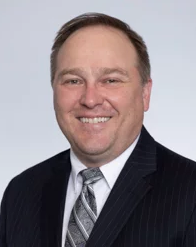Kamin: Newsom's Budget Proposal Would Add Resources to WCAB
Monday, February 5, 2024 | 0
Gov. Gavin Newsom’s preliminary budget includes a proposal to add eight new judges for the Workers’ Compensation Appeals Board.

John P. Kamin
The proposal, which was first reported on by our friends at WorkCompCentral, would provide for six new administrative law judges at the various WCAB offices, and two more judges to help with an administrative backlog at the appeals board office in San Francisco. The backlog was most recently described in several appellate cases, the most prominent one being Earley v. WCAB.
In that case, the 2nd District Court of Appeal issued a published decision stating that the WCAB could no longer continue its grant-for-study practice as it had in the past. Instead, the WCAB could still continue granting itself more time in response to petitions for reconsideration, but it had to issue more reasoned orders explaining why.
Before the 2nd DCA’s published decision in Earley, the WCAB would on occasion grant petitions for reconsideration, state it needed more time to issue a decision and then sometimes take a year or years to issue the subsequent decision. This led to a backlog of cases that were awaiting decisions.
Although we do not know how many cases there are in the grant-for-study backlog, estimates from 2023 varied somewhere between 500 and 800. The addition of two judges to the appeals board’s office in San Francisco would help the WCAB reduce the backlog.
If one reads the comments at the bottom of WorkCompCentral’s blog, two Southern California practitioners had interesting feedback on the topic:
- Defense attorney George Corson pointed out that the two judges assigned to the appeals board could help reduce the backlog, but the six new judges would probably increase the number of cases being appealed. He recommended a ratio of one WCAB commissioner for every 20 workers’ compensation judges to help avoid future backlogs. Using that ratio, he estimated that the California workers’ compensation system would need 11 WCAB commissioners as opposed to the seven we have today.
- Applicants' attorney Alexander Solhi noted that better-reasoned decisions could reduce the number of appeals. He recommended improved supervision and training as a way to create better decisions.
I included Corson and Solhi’s comments in this blog because they make sense. Perhaps the days of seven commissioners were enough in the early 2000s, but it seems that a backlog of 500-800 cases is evidence that seven are no longer enough.
If one looks back, the WCAB was also not sufficiently staffed with seven commissioners. It routinely had fewer than seven commissioners for years at a time due to multiple governors’ failures to appoint new ones. Now when the WCAB is missing active commissioners, it is allowed to have deputies write panel decisions. Still, perhaps more of both are needed.
Some have questioned what additional commissioners or staff attorneys would do once the backlog of cases is eliminated. Should that happen, I would propose that they could work on the incoming petitions for reconsideration and removal, as that appears to be a well that will almost never run dry.
But as the backlog of grant-for-study cases shows, a lack of work has been the least of the WCAB’s worries. I’m sure most of us workers’ compensation practitioners on the ground level would prefer a court system that is a little overstaffed as opposed to understaffed. At least Gov. Newsom’s proposal is a step toward that.
Voluminous petitions for recond, removal
Finally, I have always marveled at the vast volume of petitions the commissioners receive. One only needs to look back to 2011, when then-commissioners Ronnie Caplane and Alfonso Moresi appeared at various workers’ compensation conferences and candidly described the issues they were seeking to address.
To Solhi’s point, the commissioners also mentioned in 2011 that they were giving judicial training to judges for the first time in four years in an attempt to reduce lien litigation.
Whether it was liens or attorneys’ gamesmanship with the qualified medical evaluator process, the issues these commissioners were analyzing were far from simple, and it was clear that they spent hours debating the pros/cons of certain judicial stances.
While that sounds like it might be enjoyable from an academic perspective, the fact is that the WCAB issued more than 926 panel decisions in 2023 alone, and we have reason to believe that they received a good number more petitions for reconsideration/removal than that. That means that if each commissioner were to split those panel decisions evenly, it averages to about 11 a month.
With about 21 business days in every month, that means a WCAB commissioner would have to author an opinion a little faster than every other day, and if another commissioner on the panel disagrees, he or she would have to confer and hammer out an opinion. That’s simply not an easy task when one considers that these decisions are chock full of citations and judicial reasoning.
More staff for the appeals board’s office appears to be appropriate. Perhaps our lawmakers will see it that way and see fit to expand on Newsom’s proposal.
John P. Kamin is a workers’ compensation defense attorney and equity partner at Bradford & Barthel’s Woodland Hills location. He is WorkCompCentral's former legal editor. This entry from Bradford & Barthel's blog appears with permission.





Comments